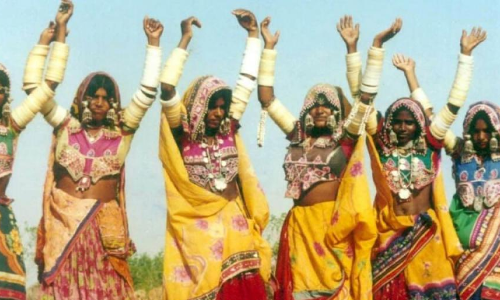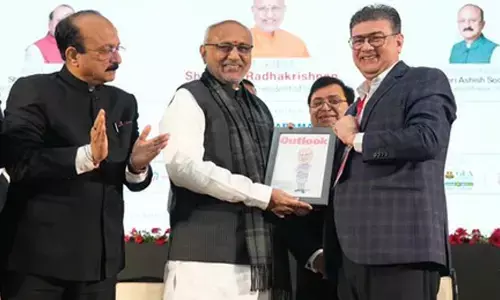Justice for tribes among tribes

Even as Telangana and Andhra Pradesh still fail to resolve the question of categorisation of Scheduled Castes, the new conflict arose as Adivasis feel that the reservations and other benefits meant for tribals are appropriated by the Lambadas.
Even as Telangana and Andhra Pradesh still fail to resolve the question of categorisation of Scheduled Castes, the new conflict arose as Adivasis feel that the reservations and other benefits meant for tribals are appropriated by the Lambadas.
The Adivasis are even demanding that the Lambadas be excluded from the list of Scheduled Tribes. As the Lambadas are not classified as tribals in other states, it is being argued that there is a massive migration of the said community to the states of Telangana and Andhra Pradesh for availing reservations.
Of course, the ongoing conflict between the two tribal communities is not just confined to the reservations as in the case of Scheduled castes. The issue has wider dimensions including the access to land and other benefits provided by the State and the law.
The Constitution provides certain special privileges for tribals in the scheduled areas and, therefore, the Adivasis feel that the privileges are being appropriated by the Lambadas due to former’s relative backwardness.
The ongoing conflict between the two Scheduled Tribes cannot be construed as a mere law and order problem. It is deeply entrenched social question and a constitutional aspect too demanding detailed examination.
The process of development or implementation of reservations effected class formation within a class, thus creating an impermeable membrane to block the percolation of benefits of reservations to the most deprived.
The social and economic differences within the tribals especially between hill and plain tribes result in appropriation of benefits of reservation by certain communities to the detriment of others.
Scheduled Tribes for the purpose of Constitutional classification may be construed as a class of citizens. But, they are not homogenous. Those who are classified as tribals are clearly demarcated groups. There is a wide social, economic and cultural differences between hill tribes and plain tribes.
These differences are quite pronounced in terms of access to resources, education, employment and political participation. In all these indicators, the hill tribes or Adivasis are most deprived.
The Article 16(4) of the Constitution says, “Nothing in this article shall prevent the State from making any provision for the reservation of appointments or posts in favour of any Backward Class of citizens which, in the opinion of the State, is not adequately represented in the services under the State.” It is beyond controversy in Indian jurisprudence that Scheduled Castes and Scheduled Tribes are also included in the expression "Backward Class of citizens".
This reveals that the constitutional scheme of reservations as a positive discrimination mechanism is based on the philosophy of providing equal justice by correcting the imbalances in education and employment. Therefore, if a section of a class enjoys disproportionate benefits to the detriment of the others, categorisation of the class is justified in accordance with the spirit of the constitution itself.
Such a sub-categorisation does not take away the benefit of reservations from anyone by sub-grouping. The categorisation is not an act of exclusion through application of creamy layer. Instead, it is only sought to be a remedy to deprivation of reservation for one group as the other disproportionately enjoys. Allotting a separate percentage of reservation from amongst the total reservation allotted to the Scheduled Tribes to different groups amongst the Scheduled Tribes does not amount to depriving one class of the benefits of reservations.
The sub-categorisation of tribes, perhaps, may be the solution to the flaring conflict between the Adivasis and Lambadas. But, the demand to exclude them from list of tribes is fraught with many challenges. The better and more reasonable solution could be sub-categorisation rather than exclusion as they also suffer from social and economic deprivation.
The possible judicial objection to sub-categorisation of STs can be on the ground that Scheduled Tribes are homogeneous and should be considered as a class in themselves for the Constitutional scheme of reservations.
But Justice VR Krishna Iyer said in State of Kerala vs N M Thomas, that a plain reading of Articles 341 and 342 of the Constitution (provisions related to SC and ST reservations) brings out the quintessential concept that they (Scheduled Castes and Scheduled Tribes) are an amalgam of castes, races, groups, tribes, communities thereof found on investigation to be the lowliest and in need of massive State aid and notified as such by the President.
The reservation policy cannot be oblivious to the difference in degree of backwardness within a class of citizens as the philosophy of affirmative action is aimed at uplifting the most depressed and the most deprived. Therefore, having found a class of persons within the Scheduled Tribes as having been deprived of such benefits the State has the exclusive legislative power to make such grouping for reservation under Articles 15(4) and 16(4) of the Constitution.
If a scientific study of social and economic conditions and the pattern of tribal reservations empirically establishes that some particular groups within the Scheduled Tribes have cornered all the benefits at the cost of others in the said List, with a view to see that the benefit of reservation percolates to the weaker of the weakest it is necessary to enact sub-categorisation of tribes. By re- grouping the castes in the Scheduled Tribe list there will be no reclassification or micro classification.
Further, sub-classification of the reserved classes is permissible in view of the judgment of the Supreme Court in the case of Indra Sawhney v. Union of India and Ors. 1992, the principles laid down therein was applicable even to the Scheduled Tribes.
The Apex court in Indra Sawhney said," We are of the opinion that there is no constitutional or legal bar to a State categorising the Backward Classes as backward and more backward..." It cannot reasonably be denied that there is no difference between these sets of castes/groups/classes classified as scheduled tribes.
If all of them are grouped together and reservation provided, the inevitably result would be that the less backward would take away all the reserved posts leaving none for more backward. It is therefore advisable to make a categorisation even among tribals so as to ensure that the more backward tribes among the tribes obtain the benefits intended for them.
In Indra Sawhney, the court further observed “if the connecting link is the social backwardness, it should broadly be the same in a given class. If some of the members are far too advanced socially (which in the context, necessarily means economically and, may also mean, educationally) the connecting thread between them and the remaining class snaps. They would be misfits in the class.
Alter excluding them alone, would the class be a compact class. In fact, such exclusion benefits the truly backward. Difficulty, however, really lies in drawing the line - how and where to draw the line? For, while drawing the line, it should be ensured that it does not result in taking away with one hand what is given by the other. The basis of exclusion should not merely be economic, unless, of course, the economic advancement is so high that it necessarily means social advancement”.
Chinnappa Reddy, J. in Vasant Kumar, said: “We do not see why on principle there cannot be a classification into Backward Classes and More Backward Classes, if both classes are not merely a little behind, but far behind the most advanced classes. In fact, such a classification would be necessary to help the more backward classes; otherwise those of the Backward Classes who might be a little more advanced than the more backward classes might walk away with all the seats”.
In the state of Jammu and Kashmir v. Triloki Nath Khosa and Ors., Supreme Court held, “Classification, however, is fraught with the danger that it may produce artificial inequalities and therefore, the right to classify is hedged in with salient restraints; or else, the guarantee of equality will be submerged in class legislation masquerading as laws meant to govern well marked classes characterised by different and distinct attainments. Classification, therefore, must be truly founded on substantial differences which distinguish persons grouped together from those left out of the group and such differential attributes must bear a just and rational relation to the object sought to be achieved”.
Therefore, there cannot be any hasty solution to the intra tribal conflict that erupted in the State. It requires careful and scientific study of facts, claims, and the counter claims. The degree of difference in the relative backwardness of different tribes should be substantially established. Policy decisions cannot be based on perception or anecdotal evidence.
It is true that the state government/ legislature has no legal competency to enact any legislation for sub categorisation of scheduled tribes. The judgements of apex court made this amply clear. But, the state government cannot absolve its responsibility. It should impress upon the Centre to find an amicable and justifiable and legally viable solution to the Adivasi-Lambada differences.















